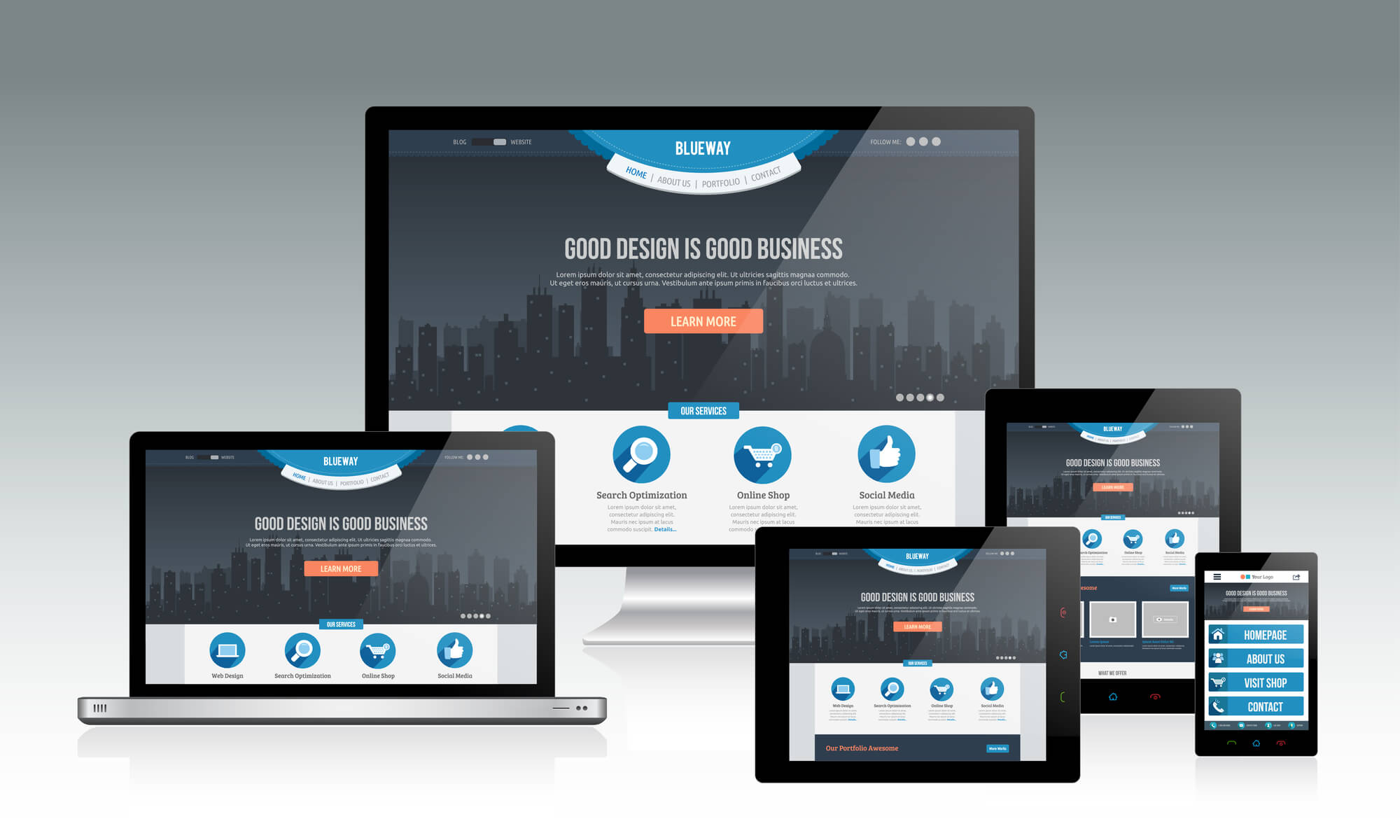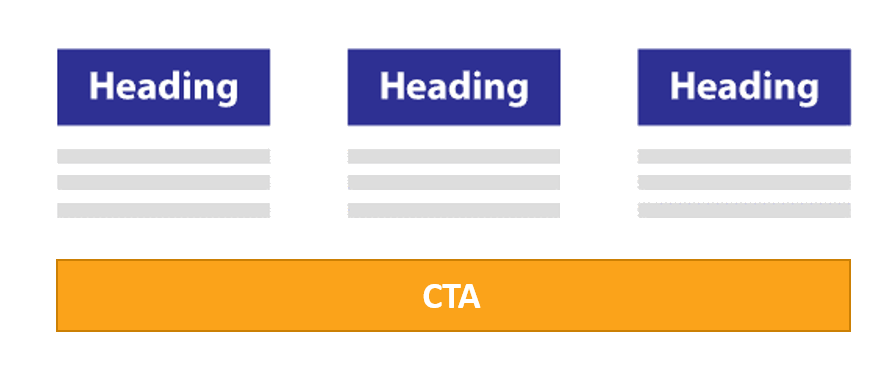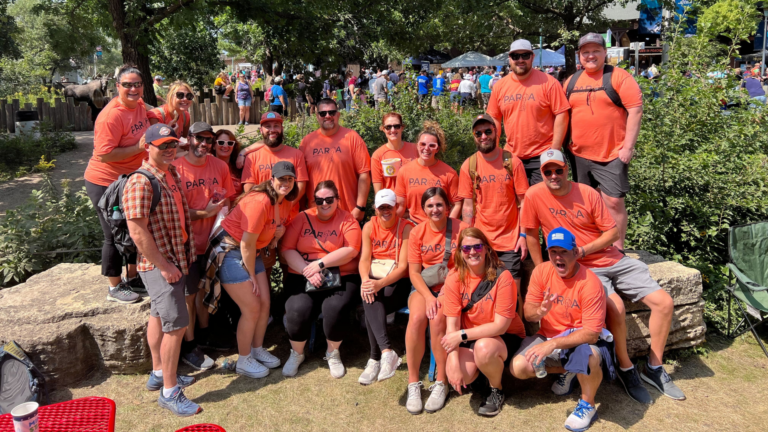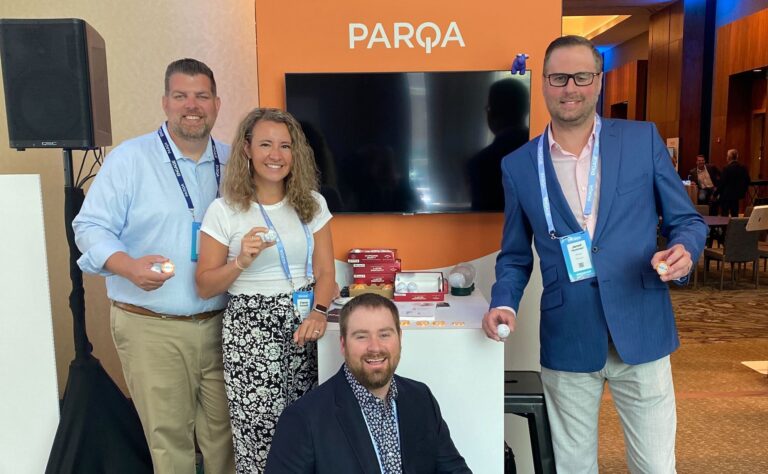It’s almost 2019 – hopefully you realized that your website, content, and overall design has a profound impact on the perceived credibility and quality of your business.
But just how much does your website’s design, layout, and content really impact your visitors’ experience and their likelihood of purchasing your product/ service?
THE ANSWER: a lot more than you might expect
Why the Design of Your Website is So Important?
Below are 9 stats that prove the importance of having a website that’s easily maneuverable, well designed and laid out, has quality content, etc.
“38% of people will stop engaging with a website if the content or layout is unattractive”
– (Source: Adobe)
It takes 0.05 seconds for visitors/users to form an opinion about your website and determine whether they’re going to stay or leave. So your website’s content and layout has to entice your visitors enough to want to stay on the site and read/ learn more about your products and services.
“88% of online visitors/ consumers are less likely to return to a site after a bad experience.”
– (Source: The Gomez report, Why Web Performance Matters)
This means that your website has to not only create a great first impression by being easy to read, easy to navigate and appealing aesthetically, it also has to entice visitors to stay on your site by almost immediately answering their questions.
“Judgements on a company’s credibility are 75% based on the company’s website design.”
– (Source: Web Credibility Research from Stanford)
 It’s almost 2019, and your website serves as a window into your company, thus it needs to exude trust and credibility. Otherwise you run the high risk of handing your potential customers over to your competitors with better designed websites.
It’s almost 2019, and your website serves as a window into your company, thus it needs to exude trust and credibility. Otherwise you run the high risk of handing your potential customers over to your competitors with better designed websites.
Most often this trust is emphasized on the ‘about us’ page of the company’s website… See Parqa’s ‘About Us’ page
“Users spend an average of 5.59 seconds looking at a website’s written content”
– (Source: Eye-tracking study by Missouri University of S&T)
 This is not a lot of time to soak in all the written content on your websites homepage.
This is not a lot of time to soak in all the written content on your websites homepage.
The key to this is to utilize a concept called “progressive disclosure,” where people aren’t bombarded with content they don’t need right away, but they are still easily able to find it and other information by digging deeper into the website. (i.e. in the main navigation menu)[/vc_column_text]
“70% of small business websites lack a Call to Action (CTA) on their homepage and across their website.”
– (Source: GO-Gulf web development)
 A great CTA button can direct users, get them to take a desired action, improve conversion rates, and ultimately help your website achieve its defined objectives.
A great CTA button can direct users, get them to take a desired action, improve conversion rates, and ultimately help your website achieve its defined objectives.
How are visitors/ potential customers supposed to know what actions you want them to take if you don’t give them CTAs that help them better find what their looking for, or how to find more information?
…. They don’t and they can’t.
Related Post: Mobile Friendly vs. Mobile Optimization: What’s the Difference? ➢
“A study found that, first impressions are 94% design-related.”
– (Source: The Effect of Aesthetics on Web Credibility, Farah Alsudani & Matthew Casey)
“That same study found that 46% of consumers base their decisions on the credibility of a website from its visual appeal & aesthetics.”
– (Source: The Real Business of Web Design, John Waters)
User Experience also plays a role in the effectiveness of your website: Learn More ➢
“47% of website visitors check out a company’s products/services page before looking at any other sections of the site.”
– (Source: KoMarketing)
“44% of website visitors will leave a company’s website if there’s no contact information or phone number.”
– (Source: KoMarketing)
 I can’t tell you how many times clients come to me asking to look at their website and give them feedback, and they have no dedicated contact form page, no phone number and/or email address prominently displayed and easily visible/ clickable on their website. And they wonder why people don’t contact them through their website or why their website doesn’t generate leads.
I can’t tell you how many times clients come to me asking to look at their website and give them feedback, and they have no dedicated contact form page, no phone number and/or email address prominently displayed and easily visible/ clickable on their website. And they wonder why people don’t contact them through their website or why their website doesn’t generate leads.
The more time, energy, and money you put into your website, and better understanding the types of visitors that are coming to your site, the harder your website will work for you to generate leads/ purchases.
So, What Does All this Mean?
Your website is a magnet for judgement—and this judgement isn’t limited to the website itself—it carries over into the way users perceive the company as a whole.
All of these stats build on one another, any snag a user/ visitor hits on your website – whether it’s related to design, loading time, content or navigation—can be detrimental to your chances of turning that visitor into a lead/ customer.
“A bad website can greatly tarnish a company’s credibility—but a quality website can help a company extend its sphere of influence and create leads.” – Sweor
The difference between obtaining a lead and losing a lead may be as simple as making small adjustments that change the way users perceive your website the first time they interact with it.
“88% of online visitors/ consumers are less likely to return to a site after a bad experience.”
Source(s):
https://www.sweor.com/firstimpressions
https://blog.hubspot.com/marketing/compelling-stats-website-design-optimization-list
https://econsultancy.com/site-speed-case-studies-tips-and-tools-for-improving-your-conversion-rate/
The Truth About B2B Web Design and Why You Should Invest in It
https://web.archive.org/web/20130209052518/http:/scholarsmine.mst.edu:80/thesis/Eyes_dont_lie_unde_09007dcc80993a1e.html
https://www.bcs.org/upload/pdf/ewic_hci09_paper66.pdf
http://www.komarketingassociates.com/files/b2b-web-usability-report-2015.pdf
https://books.google.com/books?id=8Ij4DAAAQBAJ







